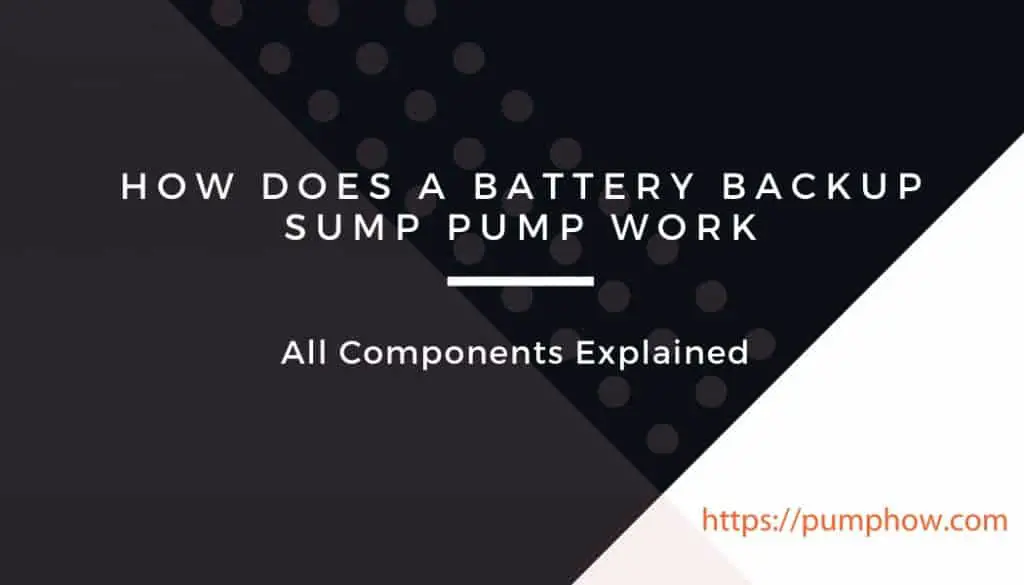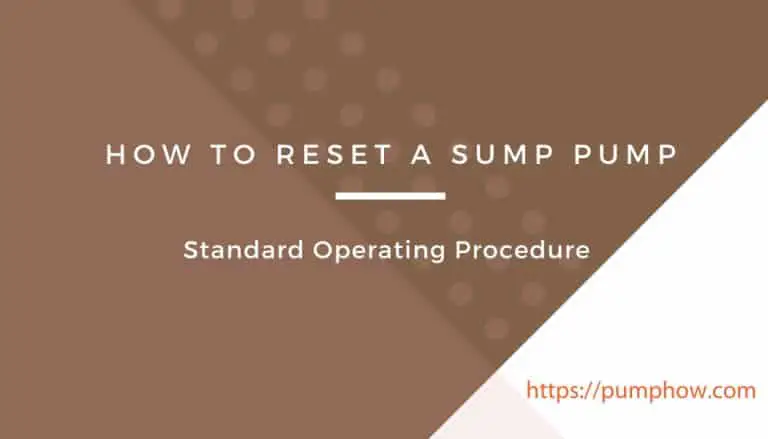What you think will happen when your primary sump stops due to unusually long sessions of activity, or mechanical failures, or power outages? With the last and the best line of defense for your basement lost, you’ll start looking for other options to protect it against flooding. A battery-powered backup sump pump seems to be the answer during those hours of need.
You know power won’t be out forever, and all your basement needs before it comes back is protection for a few hours. The job of a backup sump system is to provide those hours of service so that the basement doesn’t accumulate water while the primary pump isn’t active.
What if the main pump is working except it can’t keep up with the flow of water? It happens more frequently than you can think, especially during storms or days of non-stop rain. The backup kicks in just the moment the main unit gets overwhelmed.
So, you can take that supplementing the primary is all a backup does. Have you wondered what lies behind these supporting actions? A battery backup pump has its own operational setup, which is not much different from a primary’s. But you can still find it interesting to learn how does a battery backup sump pump work.

How Does a Battery Backup Sump Pump Work?
These pumps are designed to sense when the main pump can’t cope up or isn’t available due to electricity issues. They start working in almost the same mechanism or principle as the main pumps do. Most of the moving parts and other components are identical. For a better understanding, read our article on sump pump mechanism.
For the above-mentioned actions to be carried out, a backup pump relies on different components and factors. In this article, we’ll cover all of these aspects, such as its source of power, charger specs, trigger actions, construction material, pumping capacity, physical dimensions, and other features because all of these are associated with its overall functions.
Sources of Power
Besides batteries, other sources of power can be good for a backup pump. Some models can draw power directly from an electrical outlet while others can use power from a portable generator alongside the main electrical sources. It means these pumps aren’t going to stop just because the power is gone.
Pumping Capacity
Don’t be disappointed with the lower operational capacity because a battery backup can’t be as much powerful as a standard submersible pump. Conscious homeowners usually get a secondary pump that can handle a volume of water per hour that is very close to what a primary pump does.
Batteries
A marine battery, often known as a deep-cycle battery, is one of the most popular choices for backup pumps. Rated in AH (ampere-hours), these batteries are reliable. An 80H battery can provide 4 amps of power per hour, and it’ll last up to 20 hours. The math (80/20) is simple. Look at the printing on the battery to find this rating.
Among the lead-acid batteries, the recommended ones are the Absorbed Glass Mat (AGM) and Gel Cell batteries because they’re designed to remain in service in humid spots like the basement and/or the crawlspace. The least susceptibility of the plates to sulfate and the terminals to corrode make them suitable. Again, chances of explosions due to hydrogen are very slim.
The cost of AGM batteries can be higher than that of an average deep-cycle battery. Again, for these specially manufactured batteries, the chargers have to be special too.
Charger Specs
These numbers mean how fast and capably the battery of your pump can be recharged by the charger. The greater the strength of the charger, the faster the battery can be recharged. Most chargers come with a measurable strength factor that may vary between 0.4 and 20.
Trigger Components
For any backup system to work, a trigger is required to activate a non-electrical source of power like a battery. The rest is usual – the pump gets to work as water rises high enough to trigger the float.
Speaking of the activation of a power source like automatic standby generators, a transfer switch that is integrated into the generator system senses any interruption in the supply of power. Portable machines start their operation only after manual activation.
Construction Materials
Both thermoplastic and cast iron housings are available. Plastic weighs and costs less while cast iron goes higher on both considerations. A combination of iron and stainless steel can be the best of all in terms of durability and stability, but you won’t have a cheap deal.
Other Parts of the System
Backup sump systems come with different requirements when it comes to the dimensions or size of the pit. Since we’re thinking about two pumps including one primary and one backup, the diameter of the sump basin shouldn’t be under 18 inches.
A basin with this diameter can house both pumps without requiring their parts to be tangled or collided against each other. Backup pumps use either a vertical or tether float which requires a little larger diameter than the vertical floats.
The diameter of the discharge port (typically PVC piping) is important, which can be either 1 ½″ or 1 ¼″. The majority of backup pumps feature a special adapter that fits both sizes.
A backup sump’s ability to fit the standard diameters of the discharge port is critical to the pump’s overall performance. For example, 1 ½-inch ports can handle higher volumes of water than those having 1 ¼ in diameter can.
Using screens, most backups can handle sludge, solids, and other debris. Some models accept an additional float cage with a bottom that concaves to let solids to slide through.
Smart Features
One of the most attractive features a battery backup system is its audible alarm that sounds on different occasions like the activation of the pump, battery discharging events, low battery fluid levels, high water levels, etc.
Some models use more advanced technologies like built-in Wi-Fi alarm and notification systems that automatically make a call, send a mail notification, or text message to the owner. Apart from real-time notifications, modern battery backup pumps also feature smart diagnosis assistant that lets you know when you should pay attention to maintenance or repair.
Final Words
You might become more interested than ever in getting a battery-powered sump system now that facts about these pumps are known to you. Well, the smart models may cost you a lot more than the traditional ones, but their reliability is worth the expense.
Finally, you need a backup system that works adequately in terms of pumping volumes of water without relying on the main pump at all. After all, that’s the only reason battery-backed sump pumps are for.







